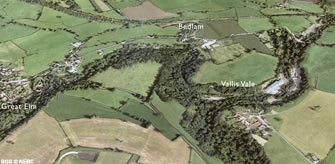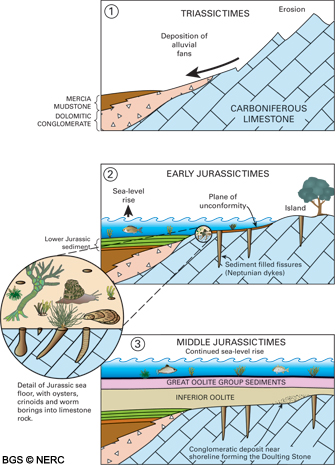
Great Elm and Vallis Vale
The deeply incised valleys between Great Elm and Hapsford are an excellent place to study the local geology. The valley sides here have been extensively quarried, creating some superb exposures of the underlying rock. In particular, the magnificent exposures in Vallis Vale display one of the best examples of an unconformity in Britain. In addition, the quarries along the Egford Book provide good exposures of the steeply dipping Carboniferous Black Rock Limestone. The steep valley sides support a diverse, and nationally rare, ancient woodland that is at least 400 years old and are now rich havens for wildlife, whilst the fast-flowing, clean calcareous waters of the Mells Stream and the Egford Brook support many riparian species.
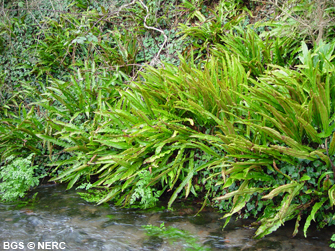
The Jurassic unconformity and fossil sea floors
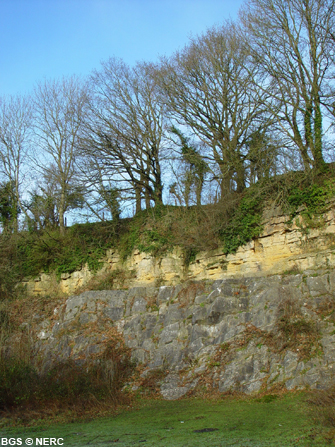
Vallis Vale contains the famous 'De La Beche' unconformity, described in the world's first Geological Survey memoir in 1846. Here, an old quarry clearly shows the unconformity between the yellow-coloured, horizontally bedded Jurassic Inferior Oolite limestone and the underlying grey, massively bedded and steeply dipping Carboniferous Vallis Limestone.
The quarry sections around Hapsford Bridge show evidence of the progressive burial of a Carboniferous Limestone 'island' as the sea level gradually rose in Late Triassic and Early Jurassic times. Here, thin limestones, conglomerates and dark clay belonging to the upper Triassic Penarth Group rest on the Carboniferous Black Rock Limestone. These marine conglomerates were deposited on the shoreline of the Carboniferous Limestone landmass, but a short distance to the west, the Middle Jurassic Inferior Oolite rests directly on the Carboniferous strata with no intervening Penarth Group sediments.
Quarrying
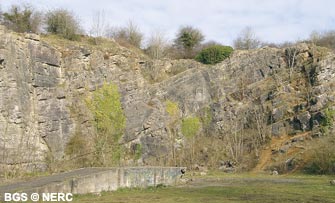
Many small overgrown quarries occur in both the Egford Brook and Mells River valleys. These quarries, developed in the Carboniferous Limestone supplied rock mostly for roadstone, but also for lime production. Several limekilns were built, one of which has been recently restored. The stone was taken to Hapsford by a tram-road for processing. The quarries are now all disused and provide a rich wildlife habitat as well as revealing the underlying geology.
- Home
- Overview maps
- Locality
areas
- Cheddar Gorge
- Charterhouse
- Blackdown
- Burrington Combe
- Shipham & Rowberrow
- Crook Peak & Axbridge
- Banwell to Churchill
- Priddy
- Harptree & Smitham Hill
- Draycott & Westbury-sub-Mendip
- Wookey Hole & Ebbor Gorge
- Wells
- Great Elm & Vallis Vale
- Mells & the Wadbury Valley
- The Vobster area
- The Whatley area
- Torr Works & Asham Wood
- Beacon Hill
- Stoke St Michael & Oakhill
- Holwell & Nunney
- Shepton Mallet & Maesbury
- Gurney Slade & Emborough
- The Nettlebridge valley
- Geology
- Minerals and mines
- Quarrying
- Caves and karst
- Biodiversity
- Detailed site information
- Acknowledgements
- External links
- Search
- Site map
